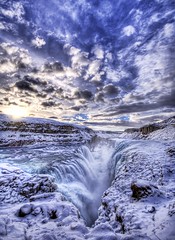
HDR enables the photographer to create a color and light palette that goes beyond the normal aperture and shutter speed of the basic shot.In my judgment, a well-executed HDR image is evocative of the actual scene itself. When a human eye is actually on location, it is constantly moving, adjusting the pupil size, allowing in more light in some areas, less in others, and the visual cortex actually works to build a patch-like vision of the scene. That is what we remember in our mind’s eye: an idealized super-realistic memory of the scene. HDR appeals to those people that actually see the world like this.
HDR normally involves multiple exposures of a scene at different stops (i.e. +4, +2, 0, -2, -4). These images are then processed and tone mapped for contrast and luminosity settings in sort of a techno-custom-software-darkroom until a light balance is achieved.
No comments:
Post a Comment